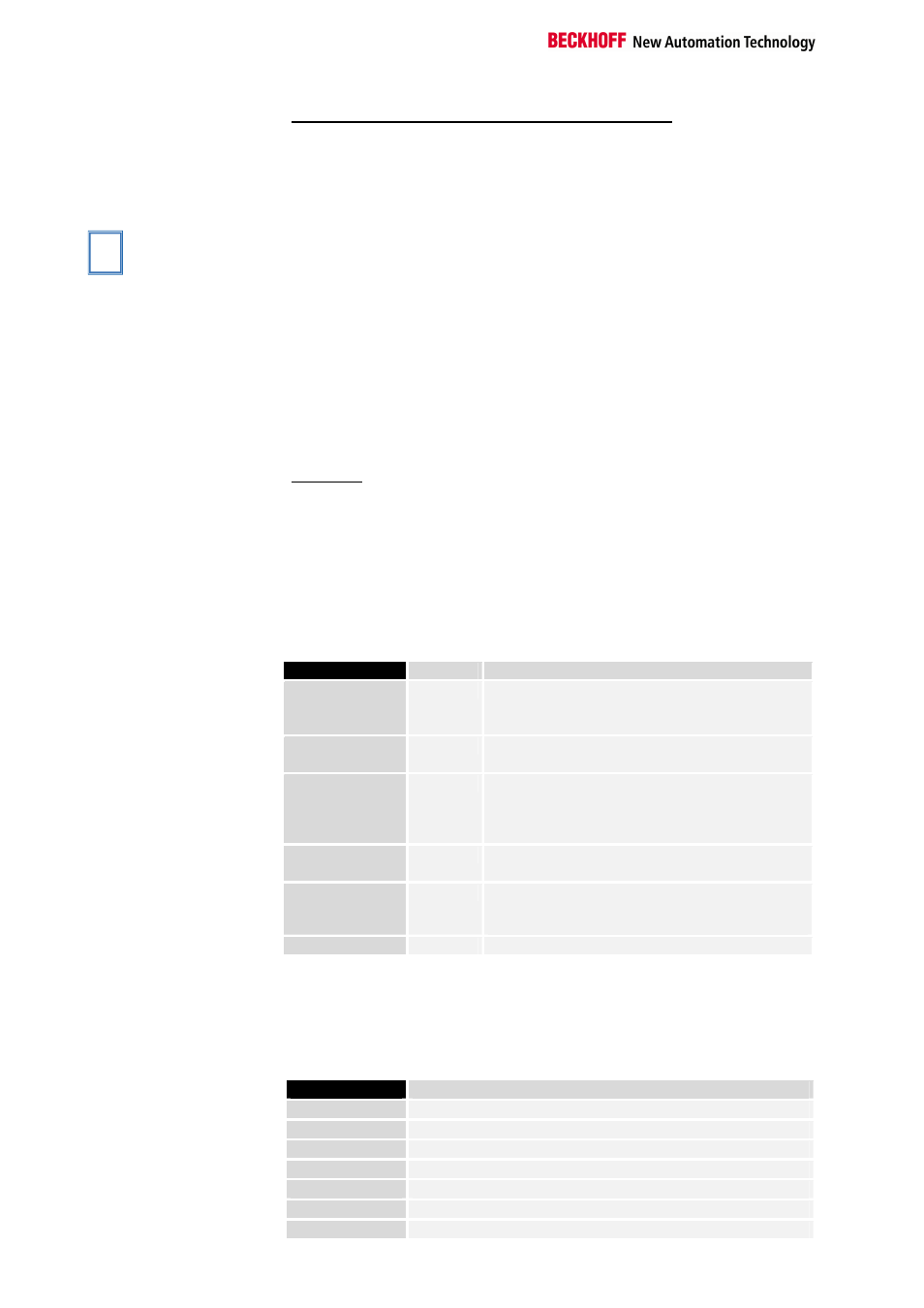Terminal-specific register description – BECKHOFF KL5001 User Manual
Page 10

Register description
10
KL5001
User parameters
i
Note
R31 - R47 "Application parameters" area (SEEROM)
The application parameters are specific to each terminal type. They can be
modified by the programmer. The application parameters are stored per-
manently in a serial EEPROM in the terminal and cannot be destroyed by
power failures. The user area is write protected over a Codeword.
R31: Code word-register in the RAM
The code word 0x1235 must be entered here to enable modification of
parameters in the user area. Write-protection is set if a different value is
entered in this register. When write protection is inactive, the code word is
returned during reading of the register. The register contains the value zero
when write protection is active.
R32: Feature-register
This register defines the operating modes of the terminal. For example, a
user-specific scaling can be activated for the analog I/O’s.
R33 - R47
Registers that depend on the terminal type
Extended application area
R47 - R63
These registers have not yet been implemented.
Terminal-specific register description
Application parameters
R32: feature register:
[0x0007]
The feature register determines the operating modes of the terminal.
Feature bit No.
Description of the operating mode
Bit 0
0/1
0: binary output
1: Gray binary number conversion [1]
The numbers are output as binary numbers
Bit 1
0/1
0: standard output format
1: alternative output format [1]
Bit 2
0/1
0: free run
1: synchronous mode [1]
The data is loaded in synchronism with the read
cycle of the terminal bus.
Bit 3
0/1
0: multiturn evaluation of the sensor [0]
1: single turn evaluation of the sensor
Bit 4
1
Disable Frame Error [0]
After the last valid bit, no check is made as to
whether the data line is supplying a zero signal.
Bit 5 - 15
-
Not used
R33: baud rate
[0x0002]
The baud rate for reading the SSI sensor is selected via this register.
High byte = not used
Low byte
Baud rate
1
1 MHz
2
250 kHz [2]
3
125 kHz
4
100 kHz
5
83 kHz
6
71 kHz
7
62.5 kHz
